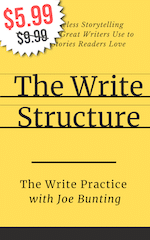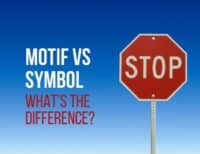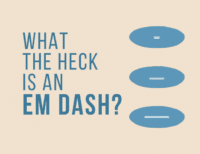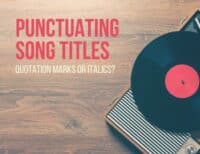The two best known of the basic plots are comedy and tragedy, These two basic plot types make up the two halves of the drama masks that represent classic theatre, and you can categorize most of Shakespeare's plays into one of the two.
Today's basic plot: the tragedy.
Want to learn more about plot types? Check out my new book, The Write Structure, on sale for $5.99 (for a limited time!). It helps writers like you make their plot better and write books readers love. Click to get the book.
What Is Tragedy?
In sixth grade English, when I was first exposed to Shakespeare, I was taught essentially that a tragedy is a play where everyone dies in the end. Clearly there's more depth than that, but you have to start small with eleven-year-olds.
In Booker's realm, a tragedy focuses on a villain protagonist, and the reader sees them delve further into darkness and evil before their ultimate death or destruction at the hands of the hero. His prime example is that of King Lear, in which the title character recognizes his error, but it's too late to repent by the time he figures it out, and he dies.
Here are the stages of a Tragedy:
Anticipation Stage
The tragic hero gets it into his or her head that something is missing, and they want it. This might be power, fame, a specific love interest, or something else, but the protagonist has their motivation for the disaster dominoes that are about to fall.
Dream Stage
The tragic hero sets out on their path to obtain their MacGuffin. Something occurs that tells the reader that this is a no-turning-back situation (Booker cites Faust's deal with the devil), and things start to go strangely well for the protagonist. He might be well on his way down the path of evil, but no one is calling him out on it, or no one can stop him, so he proceeds further into the depths.
Frustration Stage
Right about here is where the tragic hero hits his first roadblocks. They might be small annoyances, but in dealing with them, the protagonist commits additional dark acts that seal his fate and alert the reader that the only way this can end is badly.
Nightmare Stage
The tragic hero's plan is unraveling, and he can sense that an opposing force or fate is closing in. He's increasingly paranoid and living in fear of what's to come.
Destruction or Death Wish Stage
Our protagonist breathes his last, whether at the hands of his enemies or due to some final act of violence. Either way, his death isn't mourned much, and the darkness that surrounded him dissipates, and there is much rejoicing.
In a way, Tragedy is a much more cynical version of the Rebirth, or the flip side of the Overcoming the Monster story, since most monsters follow this trajectory. Classic examples are Macbeth and Hamlet, and a lot of films about organized crime also follow this trajectory (Goodfellas, Scarface, The Departed).
 Need more plot help? After you practice this plot type in the exercise below, check out my new book The Write Structure which helps writers make their plot better and write books readers love. Low price for a limited time!
Need more plot help? After you practice this plot type in the exercise below, check out my new book The Write Structure which helps writers make their plot better and write books readers love. Low price for a limited time!
PRACTICE
Pick one of the stages of the Tragedy and write a scene from that stage for fifteen minutes. Post your practice in the comments section, and check out the work of your fellow writers.








I love this series! Thank you so much!
So a tragic plot isn’t about extreme loss? So, what’s it called when through the story, the hero grows and becomes stronger, the reader loves & cheers him on, then he’s killed by the villian at the end?
RWF… Good point! I don’t think many writers would write anything quite so cynical as you describe… but certainly heroes do die in some stories, you’re right. However, check again and see if they haven’t attained a breakthrough of some kind before their death. Most stories aren’t just about the protagonist reaching (or losing) their original goal. The superficial goal serves to deliver them to some kind of redemption… which is a more profound victory, and very satisfying to the reader. Once the protagonist has scored “spiritually”, the corporeal death pales by comparison. I’ve been thinking about this and I’ve concluded that we are less worried about physical death (because it’s guaranteed that we’re going to die) than with our spiritual salvation… because that is not guaranteed. So, dying might not be a deal-breaker for the hero.
Darn. That means I have to re-write my ending for my novel. 😉
RwF… Not to worry. I rewrote my last novel sixteen times. I know a writer who rewrote his novel seventeen times, at which point he was going to give up writing… until he heard he won the Governor Generals Medal for fiction (Canada).
Excellent answer, PJ. Better than I could have said.
The stench of blood was fresh as it dripped onto the ground from the flesh that hung from the ceiling. Colin shivered with the eeriness of it, or perhaps the actual temperature which must have been hovering somewhere around fifteen degrees. Luckily the complete darkness prevented him from the sight of the hanging animals in the back of butcher’s shop. Sixty-two breaths had traveled in and out of his mouth since he had hid in the freezer. He knew his time was limited.
Growing up on the streets had taught him to be quicker and smarter than his pursuers, but he didn’t want to use his smarts this way. He had tried to apply for jobs over and over again, knowing there was another way. Every time, the interviewers face registered the disgust he felt within himself from the way he smelled, the way he looked, the way he dressed. Dark colored clothing to match their dirt flavored scent covered his bony body and he could barely get a word out before he was sent away. But he had nothing else. And now he had no other choice. That’s where the stealing had started.
It was never supposed to get this bad, he said to himself as he released breath number seventy-one. The light under the door gave him a brief glimpse of the hot air that steamed when touched by the cold. His stomach boiled with the hunger that had driven him here, the same hunger that had driven him to all the other places he had turned into crime scenes. He suddenly realized that he was gripping the gun to his chest. He pulled it away, feeling the gun’s shape embedded against his skin, just like the bullet was embedded in someone else’s. Breath number eighty-three. It was never supposed to get this bad.
Jake turned and ran, ran as fast as he could. Behind him, he could hear the dogs barking and the shouts of their human handlers, getting closer by the moment.
He leaped a brush fence like an Olympic hurdler, but landed heavily on the other side in a pool of mud that squelched and held on to his boots as he tried to drag himself clear. Breathless now, he pressed on, slipping and sliding through the undergrowth and on into the wood where it had all started.
Up ahead, the setting sun was casting long red shadows through the trees, lighting up the carpet of bluebells and daisies. If he’d had the time, it might even have been pretty. But now there was no space for pleasant thoughts, just the urge to escape from his pursuers.
The noise from behind came and went, almost teasing him. One minute it would fade away into the distance, giving him hope that he was perhaps giving them the slip. The next minute the barks would be loud and clear, suggesting that they were right on his tail. He didn’t dare turn around to look, that would carry too much risk of tripping over the branches and potholes that he was dodging.
At one point the trees suddenly ended and he found himself in a broad open track, marked by many horses hooves. Just for a second he stopped to look – and immediately recognised the spot, he’d been here before. Just up to his right, he knew, was the little wooden shack where this had all started. How ironic that it should all be coming to an end in just the same place.
If only he hadn’t been tempted to go back to the house for one last look.
He couldn’t stay here, in the open he was a sitting duck. He plunged on into the next stand of the forest, on to the river that he now knew was ahead of him. He could hear the dogs breathing now, their panting, snarling, slobbering mouths just a few feet behind him.
Suddenly he burst out into the open again, by the bank of the river. Ahead, a ravine with rocks below and boiling, bubbling foam awaiting the careless traveller. To the side, nowhere to run. Behind, the dogs and their men had now stopped running, they had no need to exert themselves further.
What choice did he have left? He looked over the cliff face, and fell into Emma’s arms.
“…and there is much rejoicing.”
By who? Why? By the readers? How can this be if we don’t like the hero then his downfall is not a tragedy in our minds. The hero has become so hideous through his dealings with the devil that all of the other character’s hate him, or pity him enough to rejoice? No. I don’t see this. Look at the end of Abandon Ship (available for free on YouTube). No one is even smiling let alone rejoicing at the end. The readers rejoice, though they may be crying, over what a wonderful story they just encountered.
I think you are being silly but it’s 100% in the wrong direction. Why not end your post with “…and there was much wailing and gnashing of teeth and the pulling out of hair.” It’s equally silly and cliché but less confusing.
Other than that one point, this is a great set of observations.
The rejoicing is done by the public of the story, in most cases.
I,e Faust’s “death” is rejoiced by the many people who hated him for his practices and how evil he had become. It’s not the reader that’s rejoicing, it’s those in the story that were affected by the protagonists evil deeds.
I know this is LONG after this article was written but does tragedy have to end in death specifically? Could it end in something that’s arguably worse, such as transformation into something subhuman (such as a zombie, werewolf, monster, etc.)?
No, it doesn’t. 🙂 Tragedy means that your hero can’t change at the end of the story in his or her soul, only realizes the mistake he/she made. And because the hero doesn’t change (in the inside), he/she can’t return in his normal world from the unknown. There’s a cool video about it on youtube, I put a link here for you. I know it’s a 3 month old question but perhaps you will find it helpful.:)
https://www.youtube.com/watch?v=ZycNLQsr-Mo
In the modern epic of Sonic the Hedgehog we see Hirokazu Yasuhara looking at Christopher Booker’s plot type of Tragedy and apply to our hero Dr. Ivo “Eggman” Robotnik. To the untrained viewer one would think that Yasuhara skips over the Anticipation and Dream Stage, but that is not true. Let us think about the life that Dr. Robonik has had leading up into the Sonic games. He is the last of a dying species, a human in the land of beast, and this horrific realization is the Anticipation Stage.
As he continues his life being surrounded by gleeful bouncing animals who are unaware of the lonely fate he has for himself he dreams up of the grand idea to build a structure that will be around for many millennia in order for future creatures to remember humans. He, and he alone, manages to construct a man made moon in the image of himself, and by extension humans. The Frustration Stage is when the player boots on their Sega Genesis and decided to play as the chaos god himself, Sonic. Sonic goes around destroying the workforce that Dr. Robotnik has created. This frustration builds as Sonic continues his path of destruction.
At a certain point Dr. Robotnik decides that he must personally stop the menacing creature. He leaves his protective fortress in the sky to personally take care of Sonic. However, Sonic makes Dr. Robotnik’s life a nightmare as he repeatedly hurts Dr. Robotnik and destroys all of his technological achievements. In the end, Sonic goes to the home of Dr. Robotnik, the Death Egg, and continues to fight him. At this point, the Death Wish Stage, Dr. Robotnik could leave and survive for another day, but instead he chooses death and to fight Sonic knowing full well that he will die alone in space as his life’s work is demolished around him.